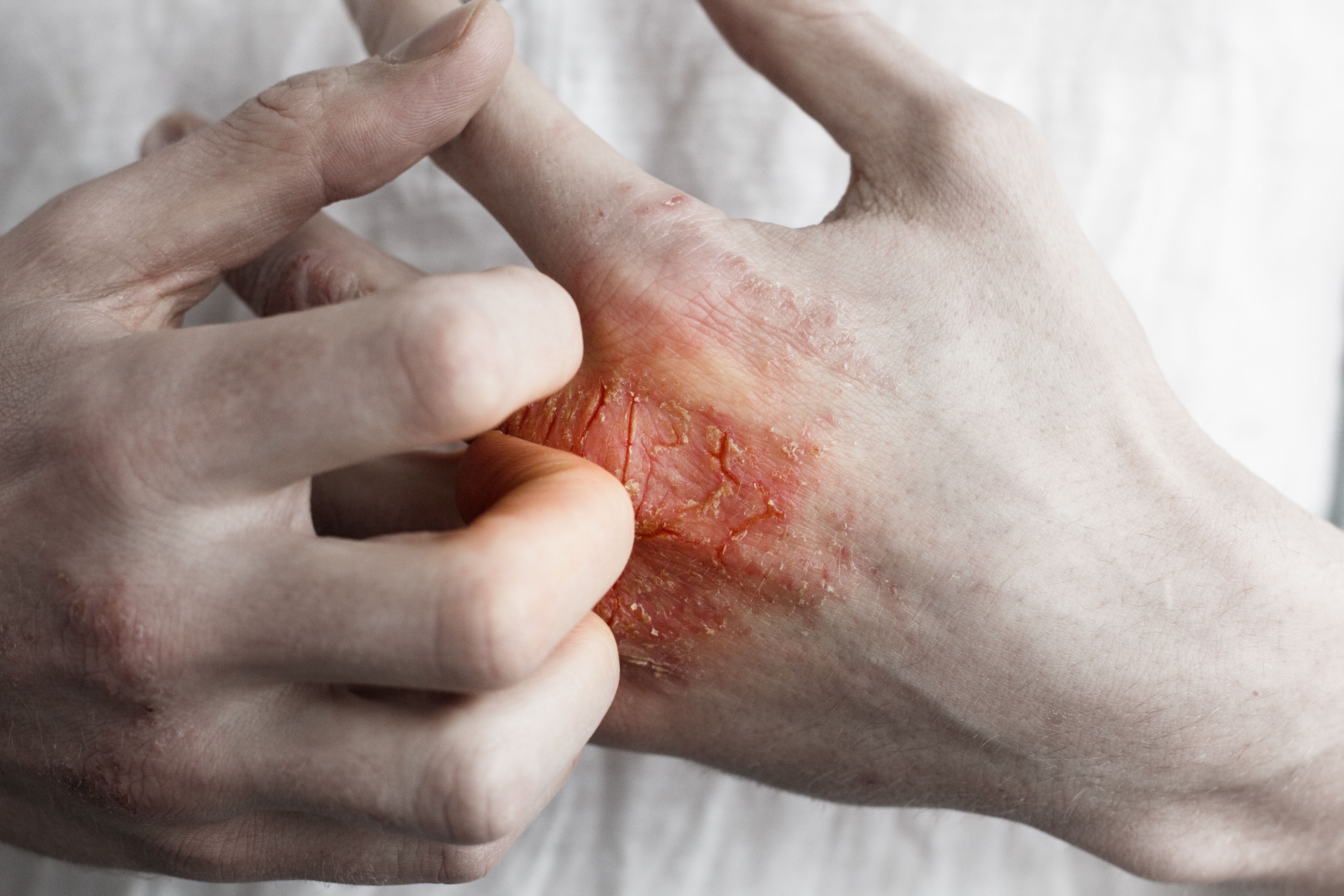Immune Checkpoint Inhibitors May Increase Psoriasis Risk in Patients With Cancer
Immune checkpoint inhibitors for patients with cancer may be associated with an increased risk for psoriasis when compared with chemotherapy, monoclonal antibodies, and protease inhibitors.
Patients older than 65 years and male patients had higher rates of psoriasis, but the relationship between psoriasis and ICI use did not significantly vary across these subgroups.

Patients with cancer who were treated with immune checkpoint inhibitors (ICIs) may have a higher risk for psoriasis, according results from a nationwide cohort study.
Cases of psoriasis occurred at rates of 5.76 per 1000 person-years (95% CI, 3.29-9.36) and 1.44 per 1000 person-years (95% CI, 1.27-1.61) for patients receiving and not receiving ICI, respectively.
After adjusting for comorbidities and demographics, patients who received ICI saw a two-fold increase in risk for developing psoriasis compared to those who did not.
“The present findings not only confirm the risk of ICI-induced psoriasis, but also provide new insights into different follow-up intervals and variations across sex and age subgroups,” wrote Li-Ting Kao, PhD, School of Pharmacy, National Defense Medical Center, and co-authors in the study published in JAMA Dermatology.
The primary end point of this study, which had a target trial emulation design, was incidence of psoriasis. The study used deidentified data obtained from the Taiwan Cancer Registry and the Taiwan National Health Insurance database to analyze 135,230 patients with stage III or IV cancer who received antineoplastic medications between January 1, 2019, and June 30, 2021.
The study included 3188 patients treated with ICIs and 132,042 not treated with ICIs. Additionally, researchers used stabilized inverse probability of treatment weighting (IPTW) to mitigate confounding variables. Patients were at the highest risk of developing psoriasis within the first 180 days of ICI treatment (IPTW-adjusted SHR = 7.69). The risk for psoriasis among ICI users reached statistical significance at every follow-up interval.
Occurrence of psoriasis also varied by age and sex. The ITPW-adjusted hazard ratio (HR) as assessed using the Cox proportional hazard model was 7.87 (95% CI, 4.02-15.42) for those older than 65 years and 1.32 (95% CI, 0.45-3.81) for those aged 65 years and younger.
The IPTW-adjusted HR for men was 3.58 (95% CI, 1.88-6.82) compared with 3.03 (95% CI, 1.09-8.40). However, the relationship between ICI use and psoriasis occurrence did not significantly change when comparing patients by age or by sex.
Researchers also compared risk for development of psoriasis against ICI treatment by non-ICI treatment type during 197,107 person-years of follow-up. While 0.5% of patients receiving ICI developed psoriasis, 0.2% of chemotherapy users, 0.1% of monoclonal antibody users, and 0.3% of protease inhibitor users developed psoriasis.
“Kaplan-Meier survival analyses with long-rank tests consistently revealed that ICI users had a lower psoriasis-free survival rate than non-ICI users in the study cohort,” the study authors wrote.
IPTW-adjusted HRs for ICIs vs chemotherapies, ICIs vs monoclonal antibodies, and ICIs vs protease inhibitors were 4.02 (95% CI, 2.29-7.03), 3.16 (95% CI, 1.43-7.00), and 2.94 (95% CI, 1.57-5.53), respectively.
“Skin adverse reactions secondary to monoclonal antibody drugs are primarily characterized by allergic rashes, which are usually related to infusion reactions,” authors wrote. “This may explain why the findings indicated that ICI users showed the highest risk of psoriasis, followed by protease kinase inhibitor users, with chemotherapy and monoclonal antibody users showing the least risk.”
Furthermore, psoriasis and immune-related adverse events (AE) from ICIs have similar biological processes: inhibiting PD-L1 can lead to inflammatory activity in Th1 cells, which are known to cause psoriasis in some cases. ICIs also cause T-cell reactivation, which can also lead to inflammation. For this reason, ICI treatment may lead to psoriasis, as the study authors hypothesized.
Because Taiwan National Health Insurance does not cover CTLA-4 inhibitors, data are not available on the occurrence of psoriasis in patients using such treatment. Additionally, data on severity and type of psoriasis are also not available.
Reference
To SY, Lee CH, Chen YH, et al. Psoriasis Risk With Immune Checkpoint Inhibitors. JAMA Dermatol. 2025;161(1):31-38. doi:10.1001/jamadermatol.2024.4129



